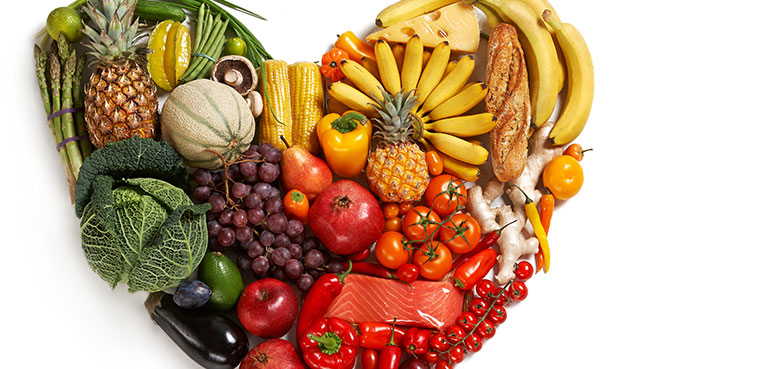Without a doubt, achieving a healthy weight is one of the top recommendations for improving health, especially when an individual is already on the road to a more serious condition such as heart disease. In fact, weight loss of just 5%-10% can help improve cholesterol levels, one of the risk factors associated with heart disease. What if you could do something that helped you get to your healthy weight and lower cholesterol at the same time?
Thanks to ongoing research into cholesterol in the body and the diet, the availability of nutrition information for food products and restaurant menu choices, a better understanding of how nutrients work in the body, and a wealth of dietitians and chefs who know how to make delicious food work for our health and palate, we can satisfy our taste buds while losing weight and lowering cholesterol.
While your primary care doctor and a registered dietitian can make specific recommendations for your situation and health goals, the 10 foods below have been shown to help with both weight loss and cholesterol reduction and deliver on flavor at the same time.
Whole Grains – These nutrient-dense foods have long been top picks for lowering cholesterol, keeping blood sugar steady and achieving a healthy weight, thanks to high levels of fiber. Start adding whole grains like these to your diet to reap the health benefits:
- Oats –Make overnight oats for a quick breakfast, add them to fresh fruit and yogurt for a grab and go parfait or try an oat recipe like these Stuffed Turkey Burgers with Smoky Aioli.
- Barley – Add this chewier grain to soups and salads, use it in place of rice as a side dish or try a new barley recipe like this Baked Chicken with Apples and Barley.
Fruits and Veggies – Fruits and vegetables are one of our favorite recommendations. Loaded with vitamins and minerals, these foods, like whole grains, are full of fiber, which helps to reduce blood cholesterol levels. Lower in calories and fat, fruits and vegetables are often one of the first foods dietitians and health professionals recommend increasing for improved health and weight loss. Aim to make half your plate fruits and veggies at every meal. These choices have been shown to be especially powerful for helping to lower cholesterol:
- Apples – Chop them up to add to your oatmeal, add slices to your sandwich or salad, enjoy as a quick snack or bake for a healthier dessert like this Apple Pistachio Crisp Recipe.
- Citrus fruit – Skip the juice and enjoy the whole fruit to get the most fiber with recipes like this Mixed Greens with Fresh Oranges and White Beans dish.
- Eggplant – Get ideas from your favorite chefs or whip something up at home. Grill, bake, add to pizzas, pastas and stir fries to take advantage of this veggie. These healthy eggplant recipes can help you get started.
- Okra – If you’re looking to lower your cholesterol, you’ll definitely want to consider adding okra to your diet in stir fries, stews and more.
Healthy Fats – Healthy fats, like those found in many nuts and fatty fish, have been shown to help improve blood cholesterol levels and heart health overall. In addition, despite being high in calories, foods rich in healthy fats have shown promise in helping to curb hunger and help with weight loss.
- Salmon – Fatty fish like this are a great way to include heart-healthy omega 3s in your diet as well as add plenty of protein. Protein can be a dieter’s best friend! Grilled, broiled, baked, or poached, salmon is a versatile and healthy option.
Walnuts – Add them to that oatmeal or to your salads or enjoy a small handful in between meals to keep you on track with both healthy cholesterol levels and a healthy weight. Also try them in recipes like this Baked Walnut Stuffed Pears, which incorporates both fruit and nuts for a double dose of cholesterol lowering goodness. - Walnuts – Add them to that oatmeal or to your salads or enjoy a small handful in between meals to keep you on track with both healthy cholesterol levels and a healthy weight. Also try them in recipes like this Baked Walnut Stuffed Pears, which incorporates both fruit and nuts for a double dose of cholesterol lowering goodness.
Beans and Legumes – Packed with fiber and protein, these foods always top lists of healthy foods to include in your diet. They are especially known for helping to reduce blood cholesterol levels, and with such a wide variety of options, they can be an easy addition to any diet.
- Black Beans – Mix with veggies and spices to create a unique side or make them the star of the meal as a soup, salad, burrito or other tasty option.
- Lentils – Similar to black beans, these versatile legumes (also called “pulses”) can stand on their own or accent some of your favorite dishes. Add healthy lentil recipes like these to your menu this week for flavor and healthier cholesterol without the added calories. This year is the International Year of Pulses, a great time to start making the most of these nutritional powerhouses.
How do you incorporate healthier choices like these into your meals at home and dining out?

